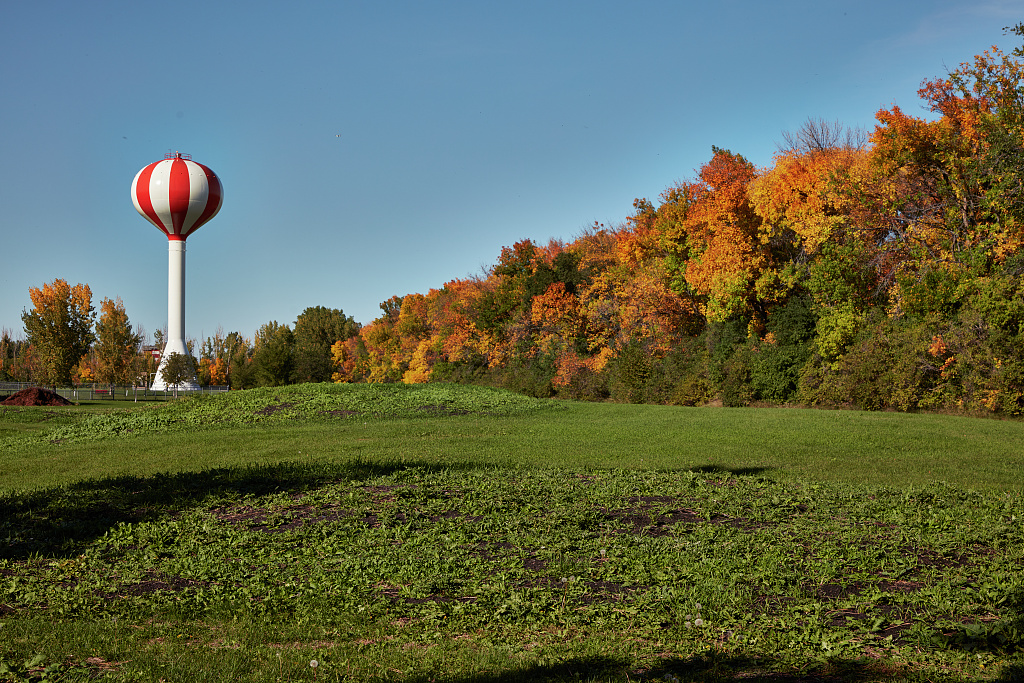The United States is brimming with iconic architecture. From Baltimore’s row houses and San Francisco’s famously colorful Victorian homes to Chicago’s Willis (formerly Sears) Tower and New York’s Empire State Building, each segment of the country has emblematic architecture to offer. For some Midwestern cities, the quintessential architectural landmark tends toward the industrial: water towers.
Rising hundreds of feet into the air, these feats of engineering can hold over 1,000,000 gallons of potable water while using gravity to create the pressure necessary for dispersing it to hundreds or even thousands of people in the surrounding area. However, across the Midwest, water towers do more than just supply water: They share a community’s identity and creativity while also signaling the emergence of upcoming towns to interstate and highway travelers.
Some water towers offer bold proclamations, like Buhl, Minnesota’s that’s emblazoned with “Finest Water in America” in large, black block letters. Others—like Pequot Lakes, Minnesota’s water tower that’s painted to resemble a bright red and white fishing bobber—use art to speak to a community’s traditions and beloved activities.
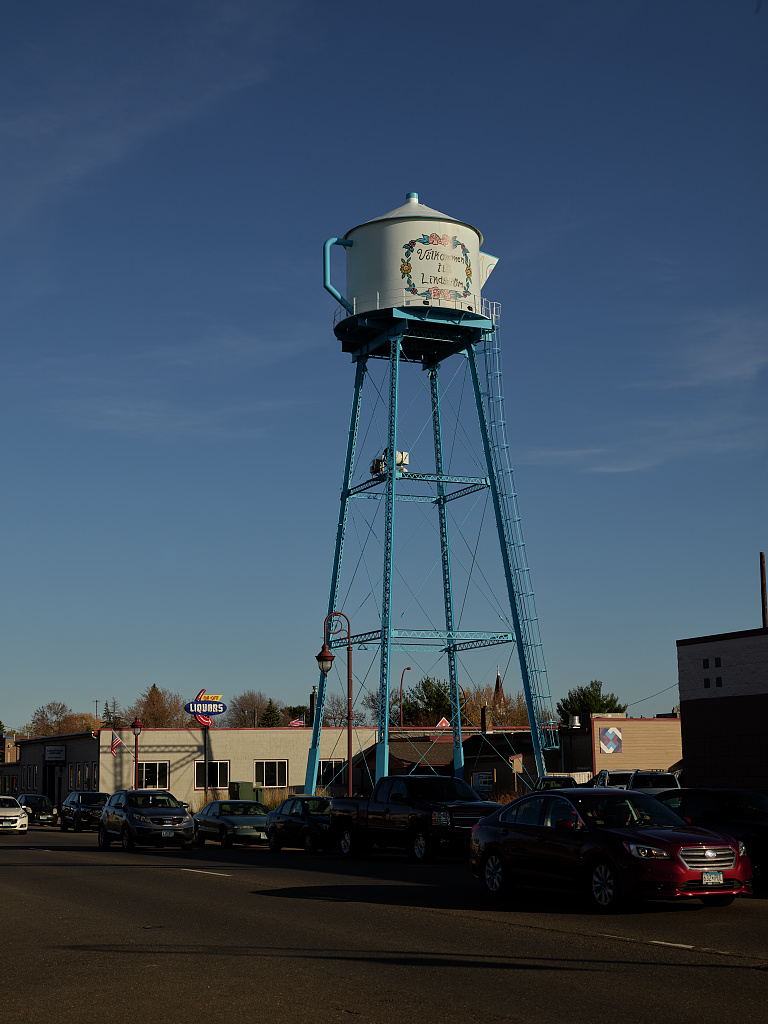
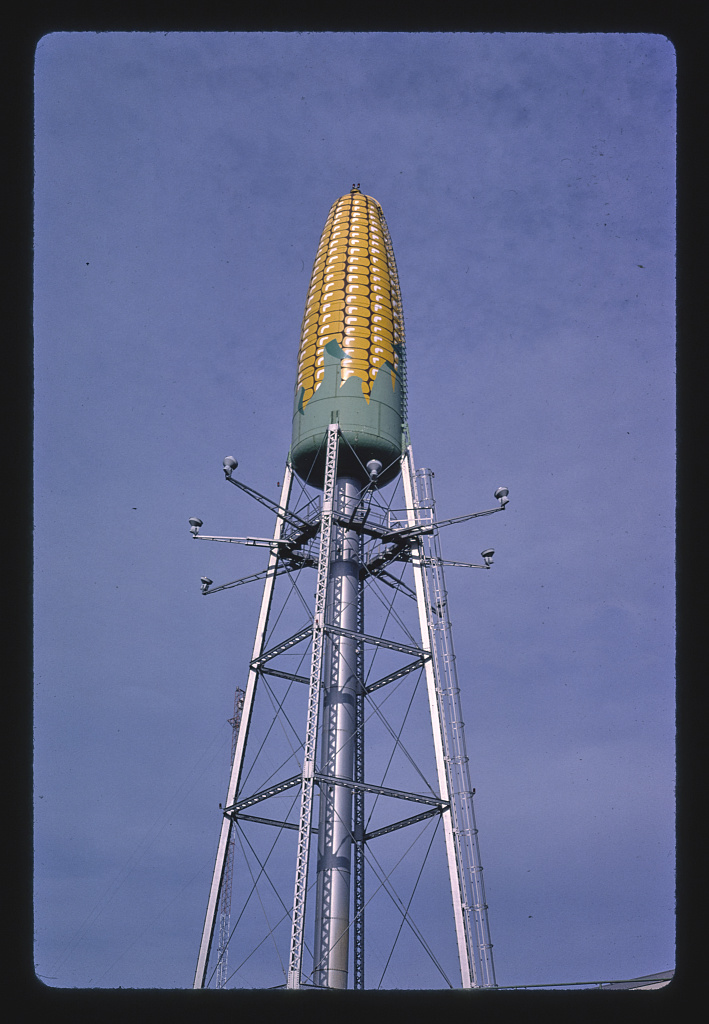
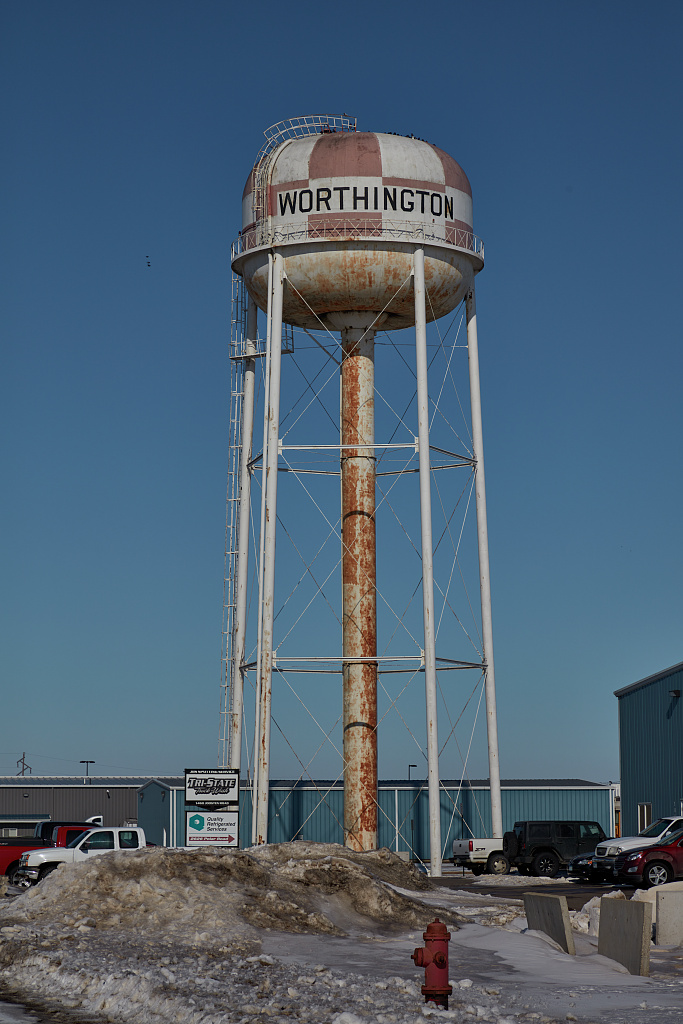
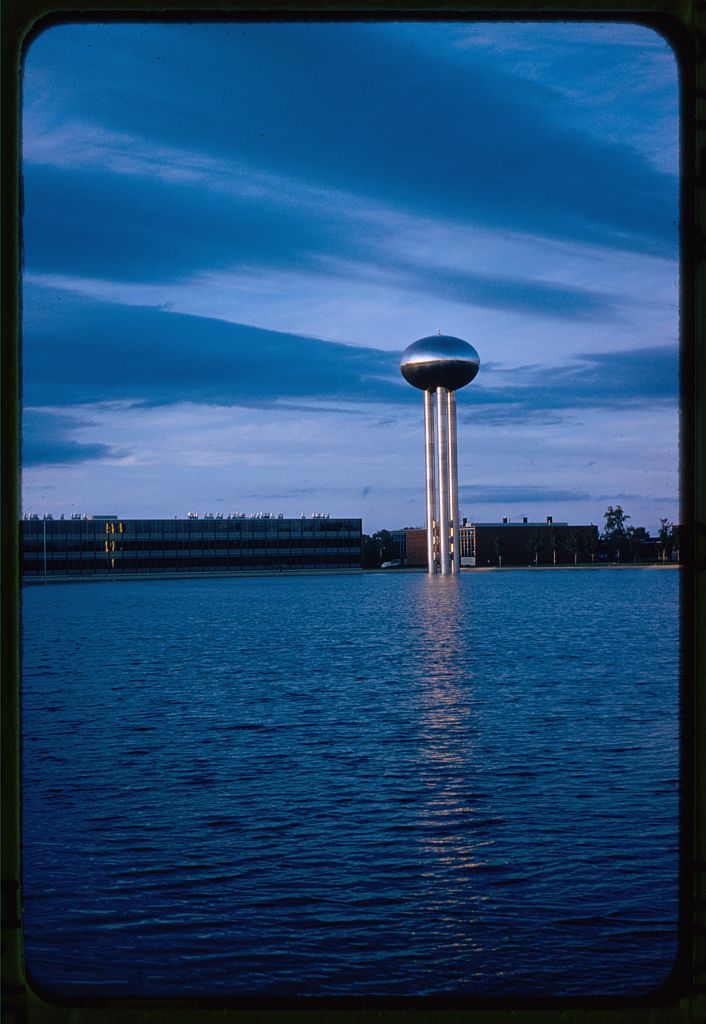
Others are decidedly whimsical: One in Ashley, Indiana is painted bright yellow and adorned with a simple smiley face. Another in Circleville, Ohio was painted to be a pumpkin. A water tower in Rochester, Minnesota has been transformed into an ear of corn while one in Stanton, Iowa has been transfigured into a Swedish-style coffee pot.
The Midwest’s water tower art can also be functional, says Stephen Dorsey, a freelance graphic and web designer now based in Rogers, Minnesota. Along with artist Jack Lunde, Dorsey has designed three water towers in the Moorhead, Minnesota area. Around 2015, the City of Moorhead annexed a nearby township. “They wanted some artwork or some sort of branding on the [township’s] tower to show people that the area was now part of the City of Moorhead,” Dorsey recalls.
Dorsey and Lunde’s proposal took a branding and logo design approach to reflect elements that spoke to the area and integrate community feedback. Their pitch centered the city’s name and brought in graphic elements of trees, birds, a windmill, and crop rows on a golden yellow background—and the city selected it from nine other proposals.
Dorsey and Lunde took a similar approach to the other two towers they designed, one of which—a bright blue, yellow, and green design that draws on agriculture themes for a tower on the city’s south side—beat out several hundred entries to earn the accolade of Tank of the Year in 2021. “We’re pretty proud of that one,” he says.
Pride is perhaps the overarching theme and outcome of Midwest water towers and the art they hold. From Collinsville, Illinois’s catsup bottle water tower to Niles, Illinois’s Leaning Tower of Niles (which is technically a water storage facility) and much in between, these unusual yet iconic canvases are a distinctly Midwestern expression of artistry, creativity, and community.
